Disclosure: This article contains affiliate links. We may earn a commission from purchases at no extra cost to you, which helps our travel content.
Standing beneath the imposing Gothic spires of St. Mary's Basilica, watching amber-colored sunlight dance across centuries-old brick facades, I couldn't help but marvel at how Gdansk has masterfully balanced preservation and progress. This Polish port city—once a powerful Hanseatic League trading hub—offers a fascinating window into how urban centers can honor their past while embracing their future. As someone who's spent years studying the intersection of cultural heritage and urban development, Gdansk represents something of a masterclass in thoughtful historical preservation.
The Royal Way: Following in Merchant Footsteps
My exploration began at the Upland Gate (Brama Wyżynna), the historical entrance where kings and dignitaries once made their ceremonial entrances into the city. This Renaissance gateway marks the beginning of the Royal Way—a processional route that cuts through the heart of Old Town. As an urban planner, I was immediately struck by the deliberate layout; this wasn't just a street but a carefully choreographed sequence of architectural experiences.
Moving along Długa Street (Long Street), the facades tell stories of merchant wealth and cultural exchange. Unlike many European old towns that feel like museum pieces, Gdansk's historic center pulses with everyday life. Local students gather on benches, residents pop into centuries-old apothecaries that now house modern shops, and the scent of pierogi wafts from restaurants housed in former merchant homes.
I recorded much of my walk using my handheld gimbal, which proved invaluable for capturing smooth video while navigating the cobblestones. The stabilization made all the difference when documenting the intricate architectural details above street level—details that are easily missed by those who don't look up!

💡 Pro Tips
- Start your walk early (before 9am) to avoid crowds and capture the golden morning light on the buildings
- Look for the detailed door knockers on merchant houses—they often tell stories about the original owners' professions
- Download the Gdansk City App for interactive historical maps that show how the area has evolved since Hanseatic times
Neptune's Fountain & Artus Court: The Heart of Hanseatic Power
The Long Market (Długi Targ) opens up like a theatrical stage, anchored by the iconic Neptune's Fountain. This 17th-century bronze statue isn't just decorative—it symbolizes Gdansk's deep connection to the sea and the maritime trade that fueled its prosperity. I spent a good half hour here just people-watching from a café, noticing how both locals and visitors naturally gravitate toward this meeting point.
Dominating the square is Artus Court, perhaps the most significant symbol of Gdansk's Hanseatic past. Named after the legendary King Arthur, this was where wealthy merchants gathered to conduct business, forge alliances, and display their status. The building's facade might seem modest compared to Italian Renaissance structures, but that's precisely what makes it fascinating—it represents a unique Baltic interpretation of European architectural styles.
Inside, the Great Hall's massive tile stove and ornate ceiling demonstrate the wealth that flowed through this trading hub. I'd recommend using the audio guide available at the entrance—the detailed historical context transformed my understanding of how the Hanseatic League functioned as an early form of international commercial network, centuries before our modern notions of globalization.
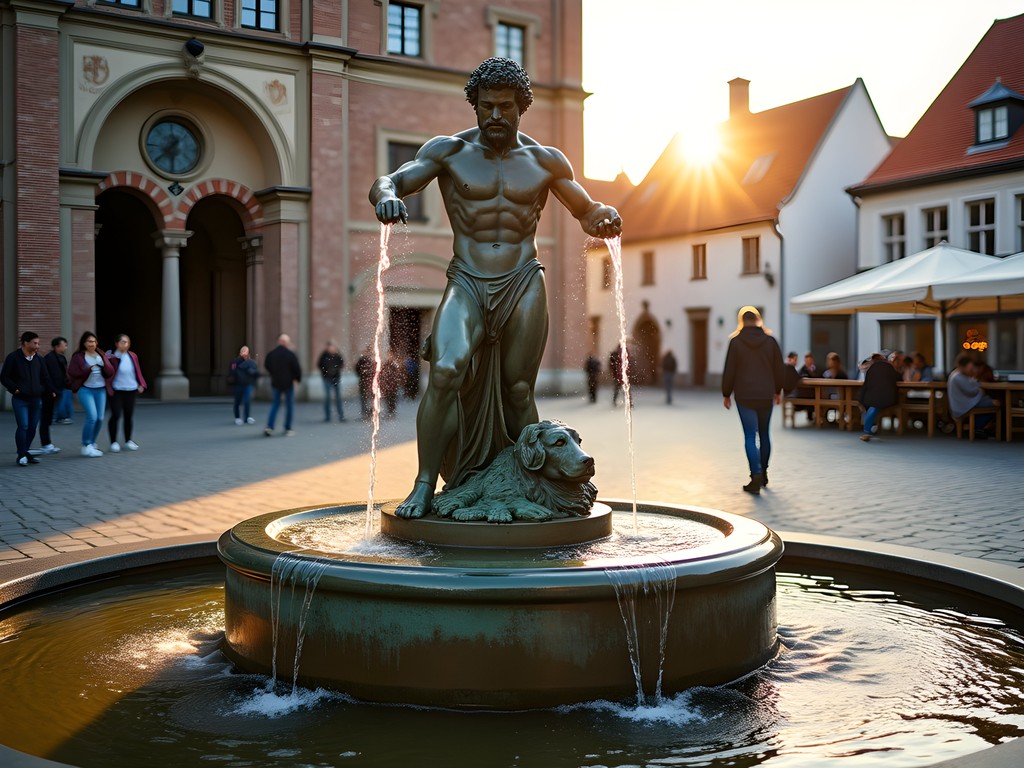
💡 Pro Tips
- Visit Artus Court after 4pm when tour groups have typically moved on
- Look for the model Hanseatic ships hanging from the ceiling in Artus Court—they're scaled replicas of actual trading vessels
- Bring a small pair of opera glasses to appreciate the ceiling details without straining your neck
Amber Treasures: Following the Baltic Gold Trail
No cultural exploration of Gdansk would be complete without diving into its identity as the world's amber capital. Mariacka Street, with its characteristic terraced steps leading to ornate doorways, hosts dozens of amber workshops where artisans continue centuries-old traditions of working with this 'Baltic gold.'
What fascinates me from an urban development perspective is how Gdansk has managed to maintain authentic amber craftsmanship despite tourism pressures. While many European destinations see traditional crafts reduced to mass-produced souvenirs, Gdansk has implemented certification programs and artisan cooperatives to preserve genuine amber working techniques.
I spent an afternoon at the Amber Museum housed in the former prison tower, which offers a brilliant overview of amber's geological origins, historical significance, and cultural impact. The museum's interactive displays explain how to distinguish genuine Baltic amber from counterfeits—knowledge I immediately put to use while browsing the workshops.
For those serious about bringing home authentic pieces, I'd recommend investing in an amber testing kit. I watched several tourists unknowingly purchasing plastic imitations from street vendors, while the genuine workshops were just steps away. The small investment in a testing kit saved me from making similar mistakes and helped me select a beautiful pair of earrings from a fifth-generation amber workshop.
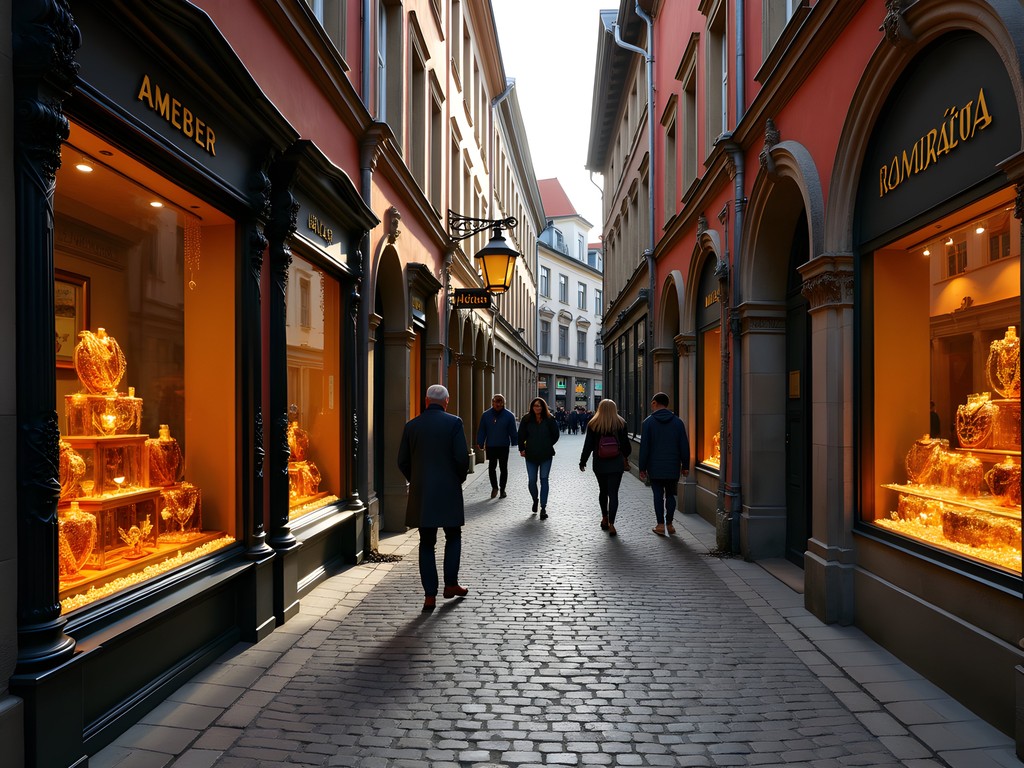
💡 Pro Tips
- Look for the 'Amber Passport' certificate in shop windows, which guarantees authentic Baltic amber
- Visit workshops in the morning when artisans are often working on new pieces and are happy to demonstrate techniques
- The best authentic amber shops are on Mariacka Street, not the main tourist thoroughfare
Maritime Heritage at the Motława River
The final stretch of my walking tour led me to the banks of the Motława River, where the distinctive silhouette of the medieval crane (Żuraw) stands as testament to Gdansk's shipbuilding and trading prowess. This wooden structure—part city gate, part loading crane—could lift cargo weighing up to two tons from ships, an engineering marvel of its time.
The riverside promenade offers a perfect synthesis of historical preservation and modern urban planning. What was once purely industrial space has been thoughtfully transformed into a public gathering area with cafes and benches, without erasing the maritime character. I was particularly impressed by how the city has incorporated educational elements about water management and Baltic ecology into what could have been just another tourist waterfront.
From the riverside, I took a short ferry across to Ołowianka Island to visit the Polish Maritime Museum. As someone with a background in marine biology alongside urban planning, I was delighted to discover exhibits connecting Gdansk's trading history with contemporary conversations about Baltic Sea conservation.
For the best views of the waterfront, I'd recommend bringing a good compact monocular. While most tourists were taking standard photos from the Green Bridge, I was able to observe the detailed craftsmanship of ship replicas moored along the quay and spot architectural features on buildings across the water. It's much less cumbersome than binoculars and fits easily in a pocket.
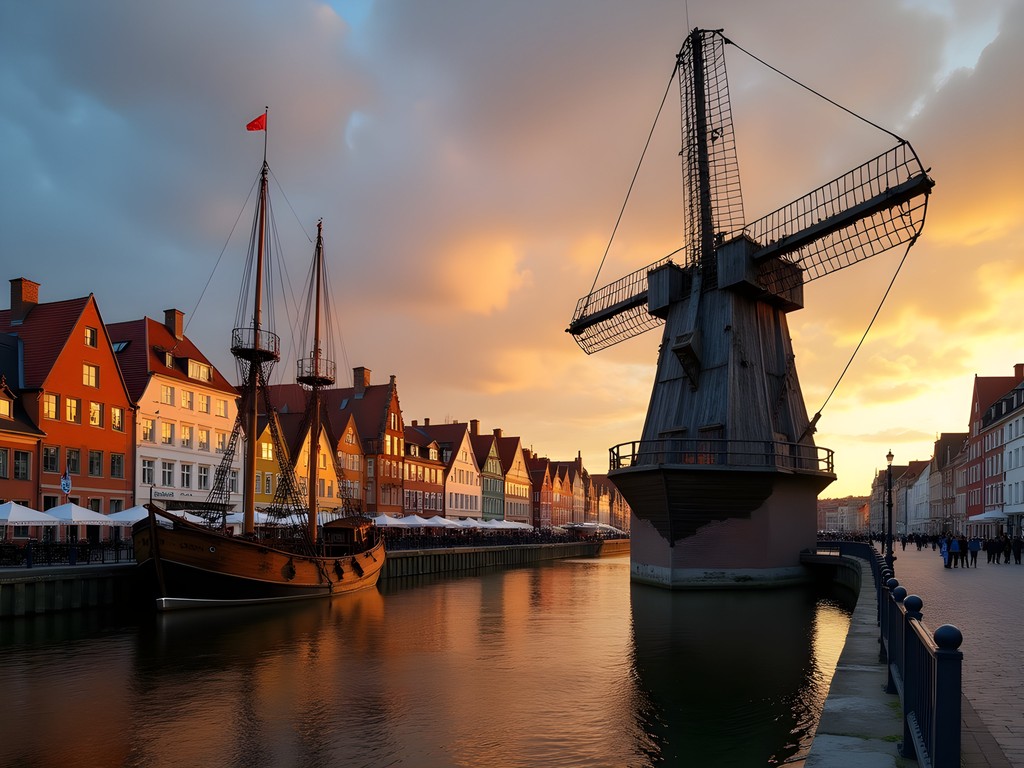
💡 Pro Tips
- Take the water tram (tramwaj wodny) for an affordable alternative to tourist cruises—it's used by locals and offers similar views
- Visit the medieval crane interior in the late afternoon when the wooden structure is illuminated by golden light streaming through the windows
- Look for the small brass markers along the waterfront showing historical water levels during significant floods
Culinary Time Travel: Tasting Hanseatic Influences
One cannot fully appreciate Gdansk's cultural heritage without exploring its distinctive cuisine—a fascinating blend of Polish traditions and international influences from centuries of maritime trade. The city's Hanseatic connections brought spices, preservation techniques, and cooking methods that still influence local dishes today.
I started my culinary exploration at the centrally located Hala Targowa (Market Hall), where vendors sell regional specialties including Baltic fish preparations that haven't changed much since Hanseatic times. The smoked fish selection here offers a direct sensory link to medieval preservation methods that allowed merchants to transport goods across the Baltic.
For dinner, I sought out restaurants serving traditional Gdansk dishes like goldwasser (herb liqueur with gold flakes), a culinary tradition dating back to the 16th century. Another must-try is groat sausage with marinated beetroot, which reflects the hearty, practical cuisine of the merchant class that once dominated the city.
To record the culinary highlights and recipe inspirations, I used my trusty waterproof notebook. This proved invaluable when a sudden Baltic shower caught me mid-note while dining at an outdoor café! The waterproof pages protected my collection of restaurant recommendations and recipe notes—something I'm grateful for now that I'm attempting to recreate some Gdansk specialties back in my Albuquerque kitchen.
I also picked up a Baltic spice blend from a small shop near St. Mary's Basilica. The unique mixture of cardamom, nutmeg, and local herbs offers a taste of the exotic ingredients that once made their way to Gdansk through Hanseatic trade routes.
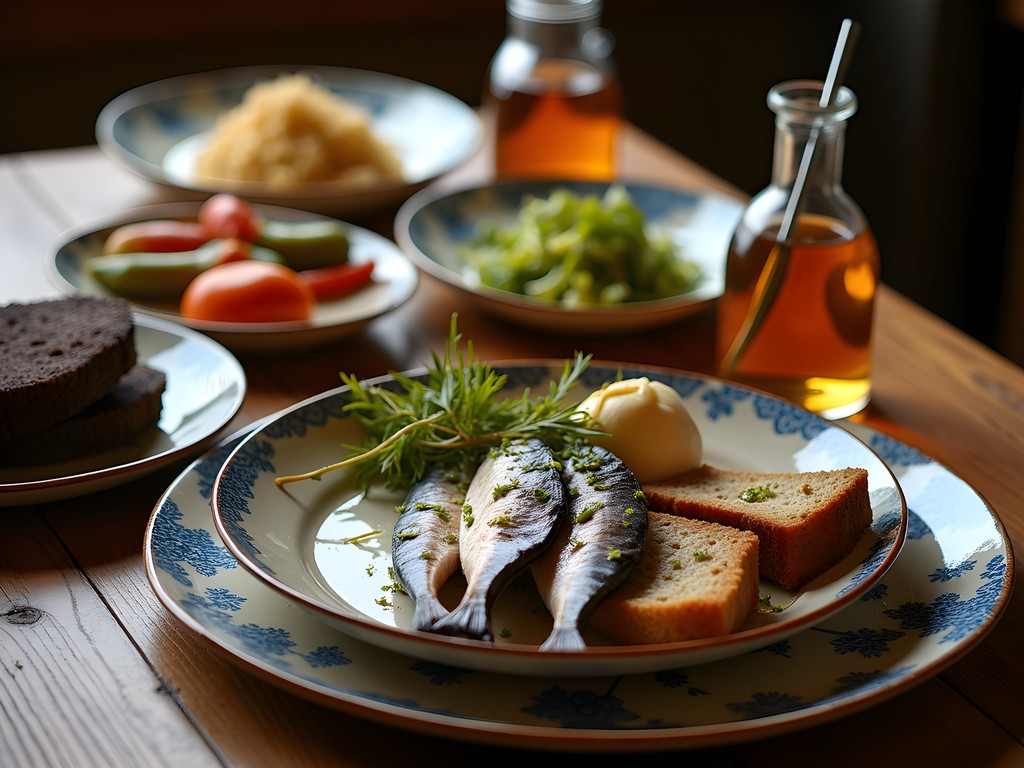
💡 Pro Tips
- Ask for 'Goldwasser' at Pod Łososiem restaurant—they've been serving this gold-flecked herbal liqueur since the 16th century
- Visit the fish market early (before 8am) to see local restaurants sourcing their daily catch
- Look for restaurants serving 'Pomorski' regional dishes rather than generic Polish cuisine for the most authentic Gdansk flavors
Final Thoughts
As my weekend in Gdansk drew to a close, I found myself sitting on a bench along the Motława River, watching amber light play across the facades of merchant houses. What struck me most about this Baltic jewel wasn't just its well-preserved architecture or fascinating museums—it was how the city has created a living relationship with its Hanseatic past. Unlike some historical centers that feel preserved in amber (pun intended), Gdansk breathes and evolves while honoring its foundations.
For urban planners and cultural enthusiasts alike, Gdansk offers valuable lessons in how cities can maintain authentic connections to their heritage without becoming fossilized. The thoughtful integration of historical narrative into everyday spaces—from interactive waterfront displays to artisan workshops—creates an experience that's educational without being didactic.
Whether you're tracing the footsteps of medieval merchants along the Royal Way, examining amber treasures on Mariacka Street, or sampling Baltic cuisine influenced by centuries of trade networks, Gdansk rewards those willing to look beyond the surface. I came seeking Hanseatic history but discovered a masterclass in cultural continuity—a city that understands that the most sustainable preservation happens when heritage remains relevant to contemporary life.
✨ Key Takeaways
- Gdansk's Old Town offers one of Europe's best-preserved examples of Hanseatic League architecture and urban planning
- The city's amber craftsmanship represents an unbroken tradition dating back centuries—look for certified authentic workshops
- The layout of the Royal Way was deliberately designed as a processional experience—follow it in sequence for the full historical impact
- Maritime influences permeate everything from architecture to cuisine, reflecting Gdansk's identity as a Baltic trading power
📋 Practical Information
Best Time to Visit
Late May through early September for comfortable temperatures and extended daylight hours
Budget Estimate
€75-150 per day including mid-range accommodations, museum entries, and meals
Recommended Duration
2-3 full days for Old Town exploration
Difficulty Level
Easy - Mostly Flat Terrain With Cobblestone Streets

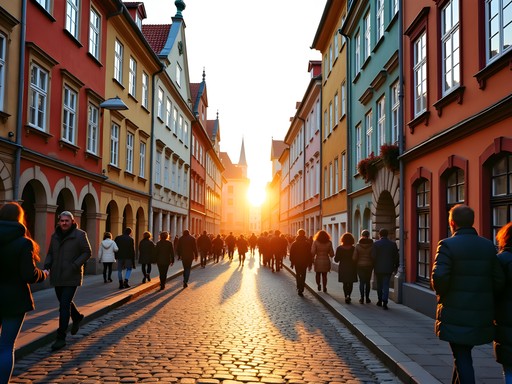

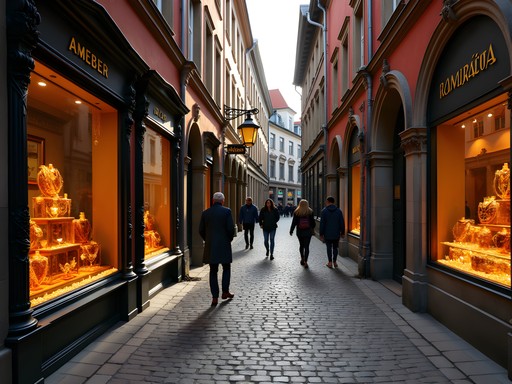
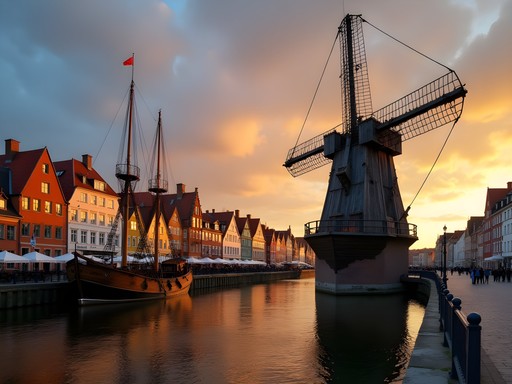










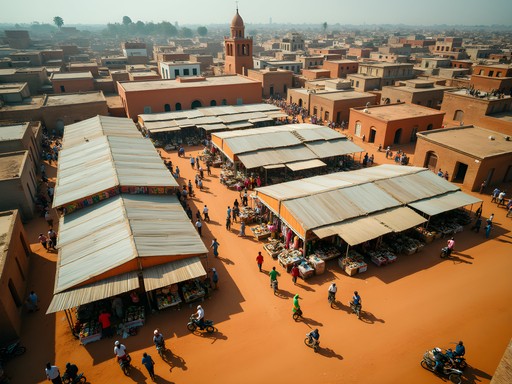
Comments
Sofia Franklin
This brought back so many memories! I spent three days in Gdansk last year on a budget trip through Poland. For budget travelers: the walking tour is completely free and self-guided using this blog post. I stayed at a hostel just outside the old town for $15/night and still had the full experience. The Museum of the Second World War that Savannah mentioned is worth the entrance fee (around $7) - plan 2-3 hours there. For food, I saved money by shopping at the little markets and having picnics along the river. Also, check if your visit aligns with free museum days - many Polish museums have one free day per week or month. The local tram system is super affordable and easy to navigate with Google Maps. Anyone else find those little gargoyles on the buildings that Savannah mentioned? I made a game of spotting them!
explorelife
Is one day enough for this walking tour? Going in December!
Sofia Franklin
I did it in one day but felt rushed! If you want to really explore the museums and shops, I'd recommend 1.5-2 days for Old Town. The Christmas market should be up in December too - it's magical!
explorelife
Thanks! Will add an extra day to my itinerary.
mountainbackpacker
Is it worth visiting in winter? Planning a December trip to Poland and wondering if Gdansk would be too cold to enjoy walking around.
Kimberly Murphy
I went in early December a few years back and it was magical! The Christmas market in the Old Town is charming, and there are fewer tourists. Just pack good boots and a warm coat - the wind off the Baltic can be quite biting!
mountainbackpacker
That's great to hear! Christmas markets are a bonus I hadn't considered. Thanks for the tip about the wind - will definitely pack accordingly!
luckyrider
Just got back from Gdansk last week and followed your walking route - absolutely perfect! We spent three hours exploring the Royal Way and could've stayed longer. The detail on the buildings is incredible. One tip for anyone going: we found a tiny cafe called Retro Cafe just off the main path near St. Mary's that serves amazing pierogi and hot chocolate for half the price of the waterfront places. Also, if you're into amber, bring cash - some of the smaller shops offer better prices for cash payments. We bought so much amber jewelry as gifts that I needed to use my packing cubes to keep it all organized and safe on the flight home!
Mason Ferrari
Excellent coverage of Gdansk's Hanseatic connections, Savannah. I visited last autumn and would add that the European Solidarity Centre is worth the detour from Old Town - it provides crucial context for understanding how this city shaped modern European history. Your route along the Royal Way is spot-on, though I'd suggest starting early (8am) to photograph Neptune's Fountain without crowds. The amber workshops you mentioned on Mariacka Street offer demonstrations if you ask - I watched a craftsman transform raw amber into a pendant over 45 minutes. Fascinating process.
mountainrider2730
Thanks for the tip about the amber demonstrations! Heading there in November and definitely adding that to my list.
coffeestar
Wow! Your photos of St. Mary's Basilica are stunning! Gdansk just moved to the top of my bucket list!
explorelife
Same! Never considered Poland before but those amber shops look amazing!
coffeestar
Right? I'm already looking at flights for next spring!
vacationbackpacker
That amber museum is so underrated! Spent hours there fascinated by the insects preserved in amber.
Timothy Jenkins
Excellent coverage of Gdansk's Hanseatic heritage, Savannah. I led a small cultural tour there last spring and was particularly impressed by the historical layering visible in the architecture. One additional recommendation for history enthusiasts: the Museum of the Second World War is absolutely world-class and provides crucial context for understanding the city's more recent past. I always recommend visitors prepare for their trip with this guidebook which has exceptional historical context for the Baltic coastal cities. The walking route you've outlined captures the essence of medieval Gdansk perfectly!
mountaingal
OMG those photos of St. Mary's Basilica are STUNNING!! 😍 The light coming through those windows is just magical. Can't believe I've never thought about visiting Poland before. Your blog posts always inspire me, Savannah!
wanderking1411
How many days would you recommend for exploring Gdansk properly? Is it walkable or should I plan for public transport?
vacationbackpacker
Not the author but I spent 3 days there last year and it was perfect. Old Town is super walkable, but trams are cheap and efficient for going further out. Definitely worth a day trip to Malbork Castle too!
wanderking1411
Thanks for the tip about Malbork Castle! Will definitely check it out.
Venture X
Premium card with 2X miles, $300 travel credit, Priority Pass